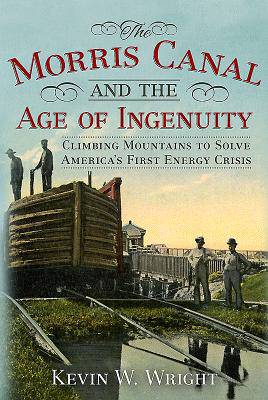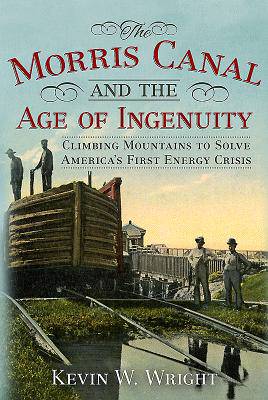
- Afhalen na 1 uur in een winkel met voorraad
- Gratis thuislevering in België vanaf € 30
- Ruim aanbod met 7 miljoen producten
- Afhalen na 1 uur in een winkel met voorraad
- Gratis thuislevering in België vanaf € 30
- Ruim aanbod met 7 miljoen producten
Zoeken
The Morris Canal and the Age of Ingenuity: Climbing Mountains to Solve America's First Energy Crisis
Kevin Wright
Paperback | Engels
€ 48,45
+ 96 punten
Omschrijving
Hauling Pennsylvania anthracite and backloads of iron ore among mountain mines, inland ports and tidewater cites along its 106-mile route, the Morris Canal (1824-1924) with its water-powered inclined planes performed an engineering feat of worldwide note. The Morris Canal and the Age of Ingenuity traces the rise and fall of this hybrid canal-and-railway from technological marvel to quaint curiosity over the course of a century. Built as part of an ambitious network of nineteenth-century "internal improvements," it combined with other canals and railways to solve America's first energy crisis, relieving rising seaboard cities of dependence on depleted woodlots and mud roads. Though superseded by all-season railroads of far greater capacity, the canal fills a formative chapter in the backstory of America's rise from colonial backwater to global economic powerhouse. For those who recognize the importance of innovation to economic growth, the Morris Canal also presents a historical lesson of timely interest.
Specificaties
Betrokkenen
- Auteur(s):
- Uitgeverij:
Inhoud
- Aantal bladzijden:
- 96
- Taal:
- Engels
Eigenschappen
- Productcode (EAN):
- 9781634990042
- Verschijningsdatum:
- 4/05/2016
- Uitvoering:
- Paperback
- Formaat:
- Trade paperback (VS)
- Afmetingen:
- 152 mm x 236 mm
- Gewicht:
- 598 g

Alleen bij Standaard Boekhandel
+ 96 punten op je klantenkaart van Standaard Boekhandel
Beoordelingen
We publiceren alleen reviews die voldoen aan de voorwaarden voor reviews. Bekijk onze voorwaarden voor reviews.











